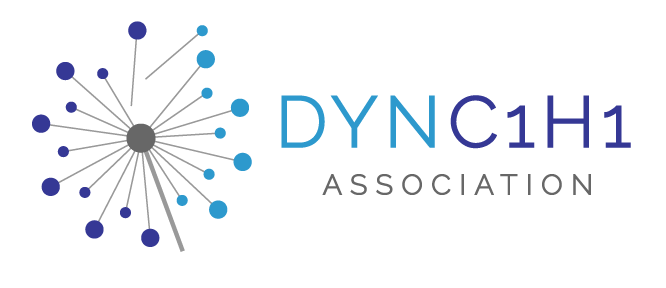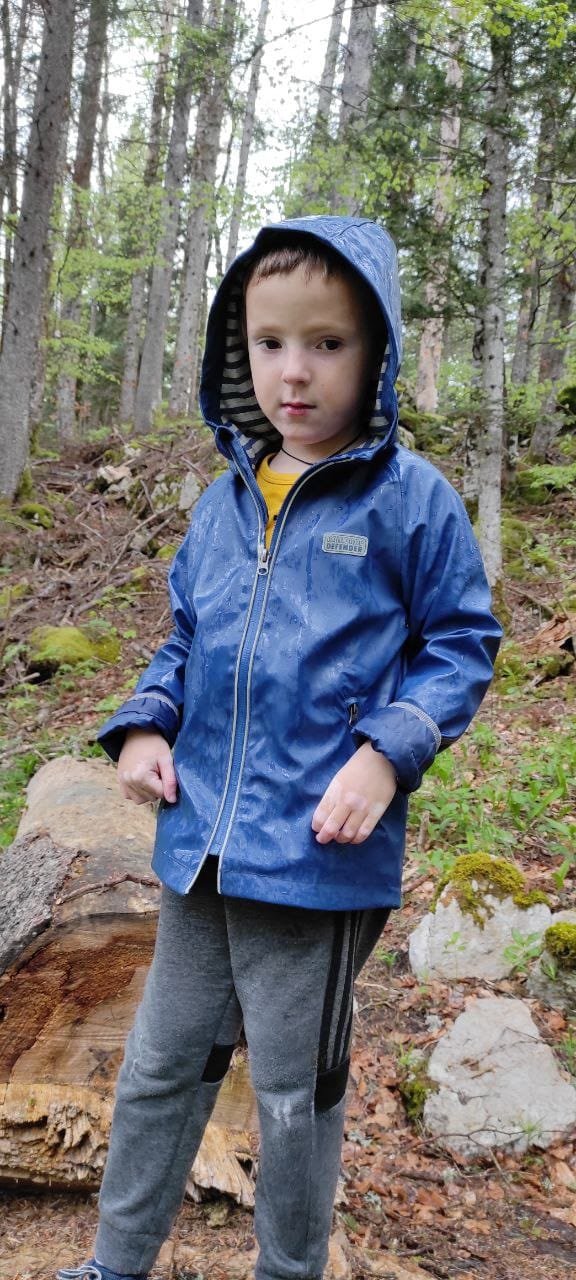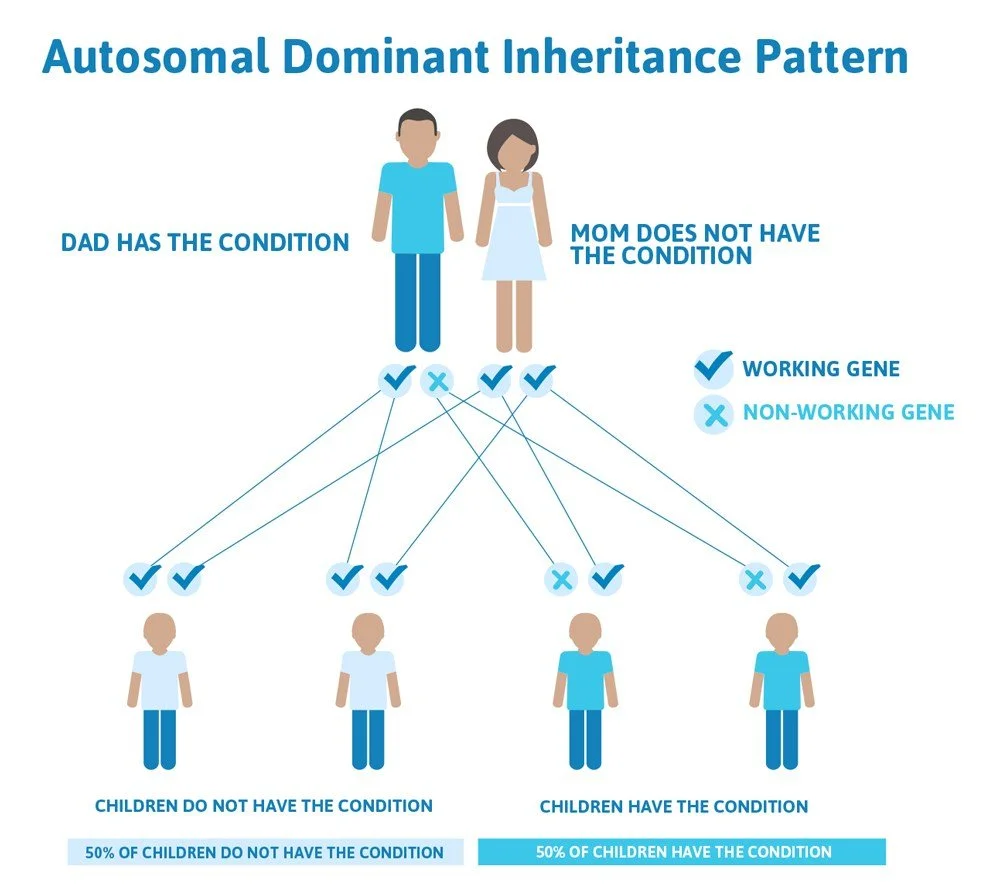Source: Becker, LL., Dafsari, H.S., Schallner, J. et al. The clinical-phenotype continuum in DYNC1H1-related disorders—genomic profiling and proposal for a novel classification. J Hum Genet 65, 1003–1017 (2020). https://doi.org/10.1038/s10038-020-0803-1
Where do SMALED, CMT-2O, and Cortical Malformation fit in with a DYNC1H1 Diagnosis?
Spinal Muscular Atrophy - Lower Extremities Dominant refers to individuals with DYNC1H1 disorders whose symptoms are primarily physical in nature. This is a condition that may progress slowly during adulthood into the elderly years.
Charcot-Marie-Tooth type 2O refers to individuals whose symptoms are primarily neuropathy that causes nerve pain and muscle atrophy. Symptoms may progress rapidly for a year or more before plateauing during adolescence and young adulthood. There are currently several studies focused on discovering the cause of this progression.
Cortical Malformations refer to brain malformations located in the brain cortex, the part of the brain that enables higher-order thinking, impulse control, speech, and other complex functions. It can also be referred to as MCD, and often appears as intellectual disability, ADHD, autism, and global developmental delay.
The Venn diagram above describes how the location of a DYNC1H1 gene variant can cause combinations of all three major symptom “buckets”. It is incredibly important to join our Patient Contact Registry so that all individuals with DYNC1H1 variants are included in future research to continue mapping the variant - symptom connection. With that information, we can more successfully target symptoms early in an individualized manner.
What does a DYNC1H1 Diagnosis mean for you and your family?
It means an answer, though not a treatment.
Each person with a DYNC1H1 Associated Neurological Disorder has a unique genetic variant in the DYNC1H1 gene. As a result, each person is affected differently. Some may have relatively mild symptoms and only be identified in adulthood, while others are more significantly affected physically, cognitively, or both. Recent improvements in screening technology mean that people are getting diagnosed at younger and younger ages.
This GeneReview summarizes current research on DYNC1H1-Associated Neurological Disorders (DAND) and can be easily shared with your physicians: GeneReview
Common symptoms include:
Foot deformities at birth.
Peripheral muscle weakness.
Developmental Delays.
Infantile Spasms and/or epilepsy.
Brain malformations, like polymicrogyria, pachygyria, or lissencephaly.
ADHD, Autism, and other behavioral or learning difficulties.
As adolescence and adulthood progress, nerve pain.
We are here for you whatever your situation may be. We are actively working on creating materials that you can provide to your team of medical professionals, educators working with your child, and raising funds to create treatments and treatment protocols so that those of us identified are not left behind to fend for ourselves.
What is DYNC1H1 and what does it do?
DYNC1H1 is a gene. A gene is a “sentence” in the “book” that is your DNA. It gives the instructions for building a single protein. In the case of DYNC1H1, that protein is called dynein (die-neen). This protein’s job is to move materials around the cell, and the move the cells themselves. This protein, dynein, is essentially a truck that moves various cargoes around the cell. It is especially important in nerve cells, known as neurons. Neurons can be up to 1 meter (3 feet) long, and dynein needs to move materials from one end to the other.
Having a variant in the DYNC1H1 gene means that the protein dynein is not always built correctly. Often the variant, or mutation, in the gene is like a typo in a sentence, changing a word from “cat” to “bat”. There are thousands of possibilities for what the variant could be, and how it affects the way the cell assembles the protein. The exact gene variant, or mutation, tells us what part of dynein is built incorrectly.
Most of the time, these variants cause the dynein “truck” to move more in a stuttering way instead of in a smooth glide. The patient’s symptoms are linked to the way dynein’s movement is different from normal.
What kinds of DYNC1H1 gene variants are there?
Point Missense Mutations
These are small changes in the DNA sequence where a single letter, also called a nucleotide, is replaced with a different letter. For example, a mutation could change the DNA sequence from "AAGCCT" to "AAGGCT." Point mutations in the DYNC1H1 gene can disrupt the normal functioning of the protein it encodes, leading to various disorders. This type of mutation is responsible for the majority of people with DYNC1H1 associated disorders.
Insertions & Deletions
These mutations involve the addition or removal of letters in the DNA sequence. For instance, an insertion might add the nucleotide "T" into the sequence "AAGCCT," making it "AATAGCCT." Deletions, on the other hand, remove nucleotides, such as changing "AAGCCT" to "ACCT." Insertions and deletions in the DYNC1H1 gene can cause significant changes in the resulting protein, affecting its structure and function.
Repeat Expansions
In certain regions of the DNA, there are repetitive sequences of nucleotides. Sometimes, these sequences can expand in size due to mutations. For example, a normal repeat sequence might be "AGGAGGAGG," but in a mutation, it could expand to "AGGAGGAGGAGGAGG." This expansion can disrupt the proper functioning of the DYNC1H1 gene and lead to specific disorders associated with repeat expansion mutations.
Some mutations may have milder effects, while others can cause more severe problems. For example, certain point missense mutations in DYNC1H1 cause neurodevelopmental disorders, which can affect a person's intellectual abilities or how their brain develops. Other mutations in this gene have been associated with neuromuscular conditions, which can result in muscle weakness or difficulties with movement. Most of the links between the mutation and its exact impact on a person are still being documented. This is why the DYNC1H1 community needs you to join our Patient Contact Registry and share your medical story with our partner, Simon’s Searchlight.
How are DYNC1H1 Variants Passed down?
Source: Medical Xpress.com, 2018
Most individuals have variants that are called de novo, meaning that they happened randomly at some point during embryo or fetal development. De novo means that the gene variant did not come from either biological parent.
Every human has two copies of each gene. One copy from each biological parent.
Nearly all individuals with DYNC1H1 variants are heterozygous. The means that one of their two copies of the gene have the mutation. So, one gene makes dynein proteins that work well, while the other causes the faulty protein to be made.
Having both a working and non-working gene, while still showing symptoms means that DYNC1H1 variants are autosomal dominant. One gene is enough to cause symptoms.
Children of people with a DYNC1H1 variant have a fifty-fifty chance of inheriting the faulty gene.







